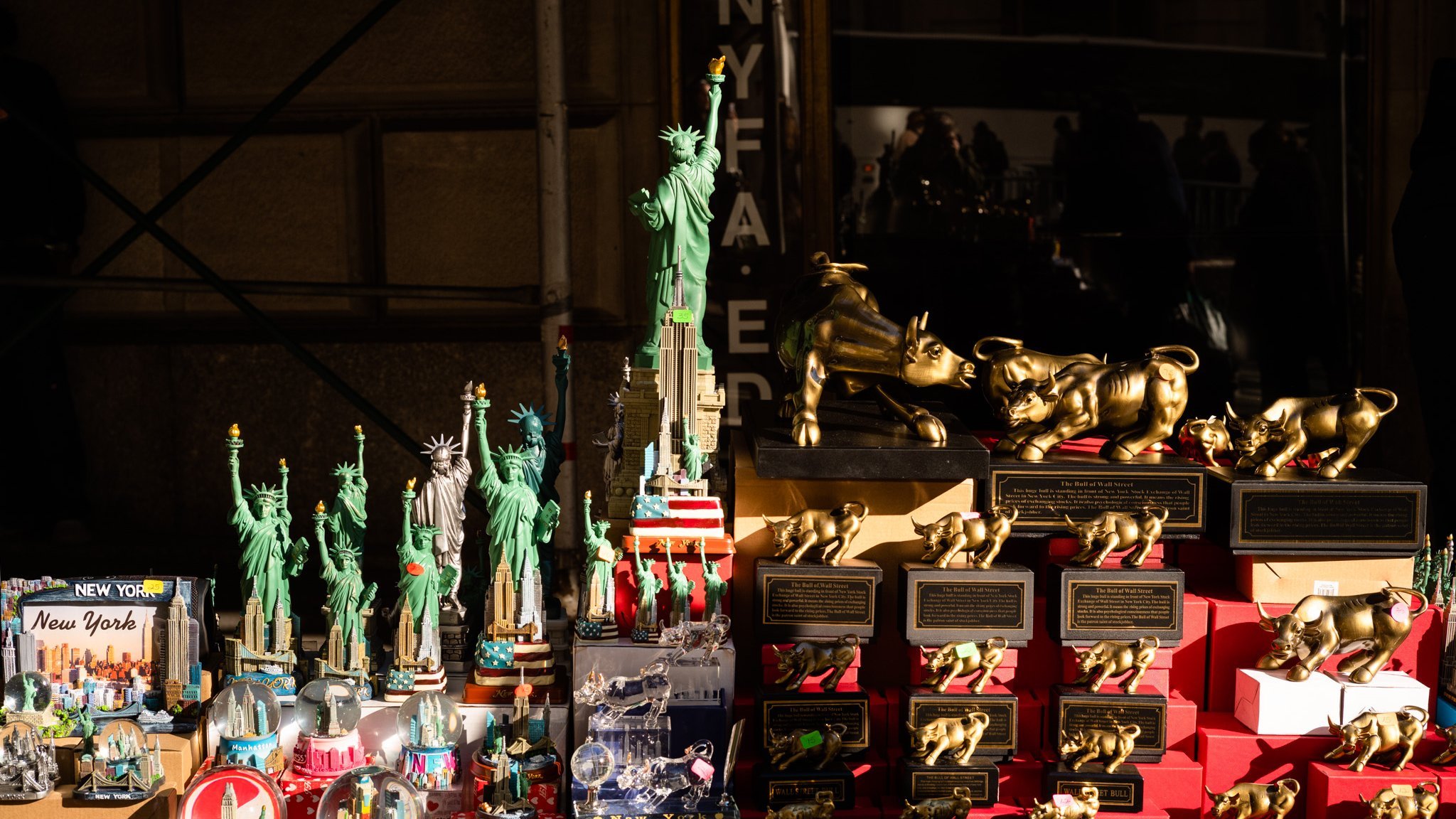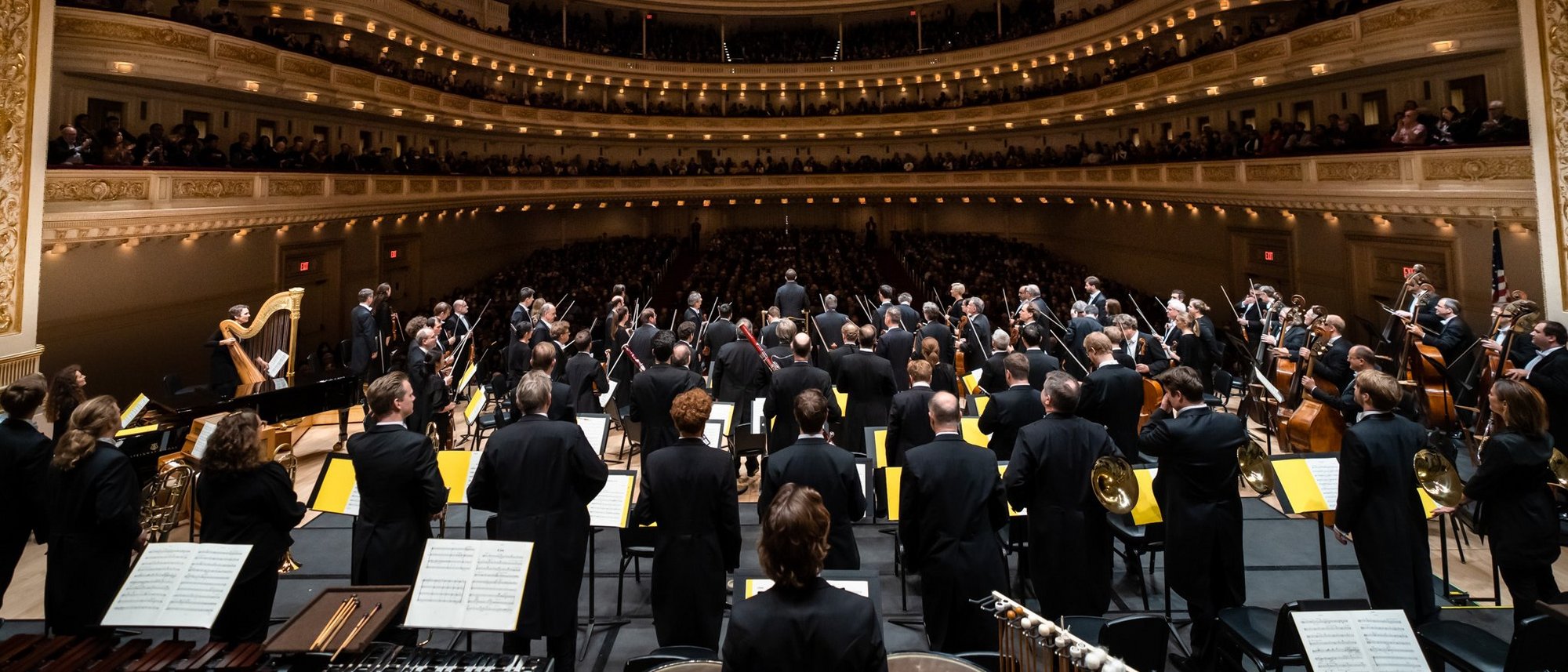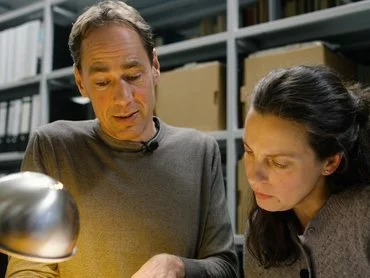
Many countries love to host the Berliner Philharmoniker on its concert tours – few more than the USA. American fans are particularly loyal supporters and followers of the orchestra. This was not always the case. To kick off this year’s USA tour, the second with chief conductor Kirill Petrenko, we look back at the Berliner Philharmoniker’s history with America.
When the Berliner Philharmoniker first toured the USA and Canada in February 1955, the organisers of the trip faced anxious and gruelling weeks. The endeavour almost failed. The orchestra’s chief conductor, Wilhelm Furtwängler, eagerly awaited by the American music world, had died in November 1954; a suitable substitute was urgently needed. Herbert von Karajan, who was 46 at the time, seemed to be the best candidate, and agreed to step in. This was his chance to succeed Furtwängler as the Philharmoniker’s chief conductor.
Knut Weber and Cornelia Gartemann take a deep dive into the archive
Risky, but successful
The trip was a gamble: ten years after the end of the Second World War, the horrors of the Nazi regime were still vivid memories. Karajan had been a card-carrying Nazi, and his presence was likely to be seen as an affront by the American musicians’ union and Jewish organisations. Given this background, how could the trip succeed? Was it worth the risk? For a group of dedicated individuals, above all André Mertens, Vice President of the American concert agency Columbia Artists Management, it was, and did everything they could to make the tour happen.
From their very first concert at Constitution Hall in Washington, the Berliner Philharmoniker’s artistic qualities convinced both press and public. “Even when playing quickly and quietly, the sound is always full. The strings have a precise, glowing tone of rare warmth and vitality. The woodwinds never play too loud,” wrote the Washington Post enthusiastically. Almost everywhere, critics praised the orchestra's unity of sound and intent as its most outstanding quality.
The tour made extreme demands on the musicians and their conductor. In just five weeks, they gave 26 concerts in 21 cities in the USA and Canada. The concert programmes were created from a pool of 20 compositions, ranging from works by Handel, Haydn, Mozart, Beethoven, Brahms, Schumann, Tchaikovsky, Mahler, Berlioz and Strauss to Blacher and Barber.
For financial reasons, the musicians travelled by bus, while trucks transported the instruments. But the effort paid off. This tour laid the foundation for the heartfelt welcome the orchestra receives in the USA and Canada today. There was also had a political dimension: It was seen as a bridge-building exercise, fostering goodwill between Germany and the USA.
Welcome guests
The Berliner Philharmoniker went on to tour North America on a regular basis – every three to five years on average. In 1986, the year in which Herbert von Karajan celebrated his 30th anniversary as chief conductor of the Berliner Philharmoniker, a tour was planned not only to the USA, but also to Japan, where the Philharmoniker became the first foreign orchestra to appear in the newly-opened Suntory Hall in Tokyo.
Although the tour schedule was kept relatively light in view of Karajan’s health – eight concerts in three weeks – the organisers had to pull out all the stops again. This time, illness forced Karajan to cancel at short notice, and a feverish search for replacements began.
“Will it be possible to sell the Philharmoniker without Karajan?” asked the critic of the Boston Globe. Under the shared direction of Seiji Ozawa and James Levine, the orchestra proved that it could be compelling even without the legendary Karajan.
Curiosity about the “new guy”
After a guest appearance in New York under the baton of Bernard Haitink in 1991 for the 100th anniversary of Carnegie Hall, the orchestra gave its first tour of North America with new chief conductor Claudio Abbado in October 1993. And for the first time in 32 years, the Philharmoniker played in Toronto, Canada – with an all-Mahler programme.
Expectations were as high as the black market prices for tickets. Of course, the “new guy” would be measured against Karajan. Critics reacted in different ways; some were enthusiastic, others more cautious. A spirit of new beginnings was heralded, and some observers wrote that the sound of the orchestral sound was warmer than it had been under Karajan.
In 1996 and 1998, the Philharmoniker performed with Abbado in New York, and in 1999 and 2001 he accompanied them to New York, Boston, Chicago, Ann Arbor and Costa Mesa (only in 2001). The 2001 tour took place under the shadow of the September 11 attacks, and showed the orchestra’s sympathy for the shocked country.
Modern times
Sir Simon Rattle took the Berliner Philharmoniker in new directions. His programmes included less German Romantic repertoire and more contemporary music, but the orchestra was as welcome as ever in the USA. After Rattle’s last tour with the Berliners in 2016, fans in New York, Boston, Chicago, Ann Arbor and Naples eagerly awaited the arrival of the new chief conductor Kirill Petrenko in 2022. He also set new accents: With Andrew Norman’s orchestral work Unstuck and Erich Wolfgang Korngold’s Symphony in F sharp major, Petrenko put the spotlight on two composers who were closely linked with America. North Carolina-born first concertmaster Noah Bendix-Balgley provided another intercontinental connection as the soloist in Mozart’s Violin Concerto No. 1.
This year marks the second USA tour with Kirill Petrenko. You can follow the tour in (almost) real time on the tour blog.


